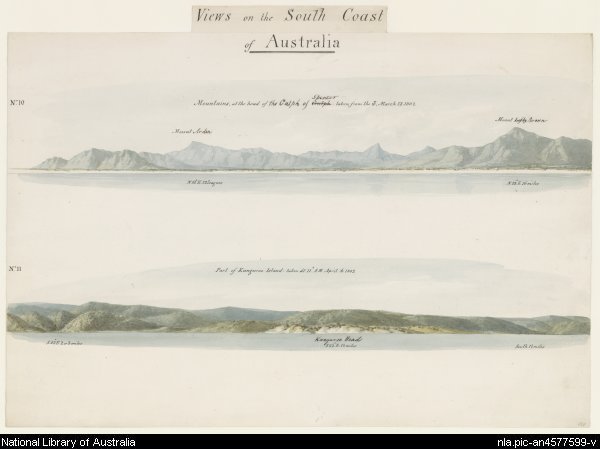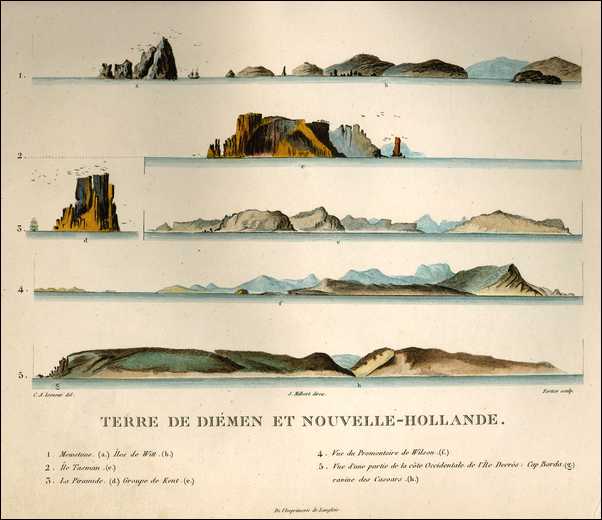|
April 15, 2009
The work of Mark Adams has given me a way to explore Australian history and memory in terms of the early European views of Terra Australis and the subsequent occupation of South Australia by British settlers and the dispossession of the indigenous people of their land.
My Rosetta Head project can be expanded from landscape to incorporate the history and cultural meaning of the landscape:--a rethinking of the history and narrative of colonial settler capitalism.
The beginning is imperial views from the perspective of the British from the boat looking at the coastline of Australia from the perspective of a voyage of discovery prior to the settlers:
 William Westall, two coastal profiles of southern Australian coastline
William Westall, two coastal profiles of southern Australian coastline
Kangaroo Island features more prominently in Westall's work and the perspective is one of discovery not conquest at the beginning of the country's European history. The conquest came latter with the settlers.
The imperial views from the perspective of the French on Baudin's boat looking at the coastline:
 Charles Alexandre Leseur, coastal profiles, Plate III. Line 5 of this plate is a view of the west coast of Kangaroo Island, Cape Borda and ravine des Casoarss. From: Atlas historique : du Voyage de decouvertes aux terres australes, by Charles Alexandre Leseur and Nicolas-Martin Petit.
Charles Alexandre Leseur, coastal profiles, Plate III. Line 5 of this plate is a view of the west coast of Kangaroo Island, Cape Borda and ravine des Casoarss. From: Atlas historique : du Voyage de decouvertes aux terres australes, by Charles Alexandre Leseur and Nicolas-Martin Petit.
I don't know of any visual representation of the counter between Flinders and Baudin at Encounter Bay, Victor Harbor.
The subsequent occupation of South Australia by British settlers, and the dispossession of the indigenous people (tribes of the Adelaide plains, Mt Barker, Murray, Encounter Bay) of their land, initially took the form of whaling in Encounter Bay then settlement.
|

unlike Australia New Zealand is becoming a bicultural nation.